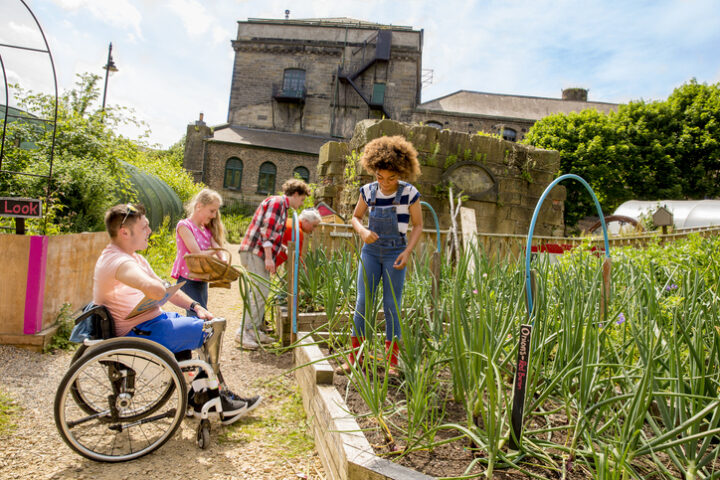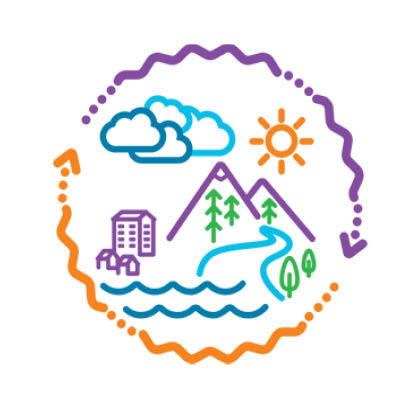Keeping Climate Science Learning and Instruction Focused on Creating Solutions and Building Community Resilience

Why It Matters To You
- Teachers should engage students of all backgrounds in locally contextualized climate solutions curricula. This work can even be taken up across school subjects.
- Less than 50% of preservice teachers have completed coursework related to climate science. District Staff & PD Providers should help teachers learn to partner with scientists, tribal educators, businesses, and other community members.
- School Leaders can promote student achievement and community-based service-learning by supporting solutions-focused climate science education.
Climate change is affecting us all. Young people and low-income communities of color are some of the most heavily impacted populations. As anticipated impacts worsen, people under 30 suffer from increasing levels of sleep disorders, despair, depression and substance abuse. Research has shown that teaching climate science alone contributes to anxieties and phobias. By also introducing students to climate solutions—along with opportunities to take scientific and civic action—climate learning can have a positive effect on students’ well-being and life and employment prospects.
Authors:
ABBY RUSKEY, DEB MORRISON & PHILIP BELL
Reflection Questions
- What community-based organizations, agencies, tribes or businesses might you approach and partner with for field-based, locally-relevant climate solutions learning?
- How can you address the social and emotional dimensions of learning about climate science? How can you provide students with experiences for meaning-making and grief processing as it connects to taking action?
Things to Consider
- Students’ climate anxiety and despair can be mitigated by learning about collective and individual climate solutions. By making climate change feel personal, urgent, and close-to-home, students’ values and identities change—and they take informed actions. This happens when teachers spend more instructional time on climate solutions than on decontextualized science. Spend 3/4 of instruction on exploring solutions.
- Providing students with climate-solutions pedagogy and resources not only responds to their social-emotional needs, but also can enhance their academic achievement and life and job preparation. Climate science learning involves engaging in interdisciplinary, field- and project-based, experiential, collaborative learning. This approach results in higher student engagement in core subject area content and higher-order cognitive skill development, such as critical thinking and problem-solving. Solutions-centered action—like in the Multisolving Framework—engages youth in socially just caretaking of their local community.
- Effective practices in climate science education focus on solutions. Instruction should: (1) be personally relevant and engaging, (2) build students’ problem-solving skills and engineering design in the classroom and community, (3) help learners construct their own ideas, and (4) engage students with scientists to collect, analyze & apply data.
Attending to Equity
- Communities of color are the most vulnerable to extreme weather events such as fires, flooding, and hurricanes. Toxic plants and facilities often reside in these communities, which are increasingly likely to be breached by fire and/or flood.
- Students of color are underrepresented in environmental careers, such as green building or wind and solar research, manufacturing and maintenance.
- Explore global climate change from the perspective of settler-colonialism. Disrupt climate change narratives—including those focused on solutions—that center on white saviorism and romantic narratives of hope.
- In instructional efforts, focus on how non-dominant communities have developed solutions and built resilience in the face of climate change impacts. Focus on the perspectives, values, and goals held by the most impacted communities.
Recommended Actions You Can Take
- Use climate-solutions-oriented curriculum, assessment tools, and other learning resources. Climate solutions storylines, digital games, carbon footprint calculators and virtual reality simulators are increasing in number, often come with teacher guides, and can be a powerful in-road for student engagement in climate science learning and solutions.
- Consider: the Cool School Challenge, the Climate Game Changer, Learning in Places, and this team-oriented carbon footprint reduction EcoChallenge tool (from NW Earth Institute).
- Provide students with field learning experiences with climate solutions professionals in your community, including Indigenous elders and scientists, local green technology businesspeople, farmers, foresters, water and soil scientists, food sovereignty experts, etc. Project Drawdown’s 100 climate solutions website and initiatives can help you and students think about those you might partner with locally.
- Embed a stewardship, service, or community science project in your curriculum sequence so students engage in hands-on, evidence-based solutions—such as caring for a local garden or ecosystem, engaging in evidence-based political action, conducting an energy audit of business or government sites, participating in tree planting efforts, etc.
ALSO SEE STEM TEACHING TOOLS
STEM Teaching Tools content copyright 2014-22 UW Institute for Science + Math Education. All rights reserved.
This site is primarily funded by the National Science Foundation (NSF) through Award #1920249 (previously through Awards #1238253 and #1854059). Opinions expressed are not those of any funding agency.
Work is licensed under a Creative Commons Attribution-ShareAlike 4.0 Unported License. Others may adapt with attribution. Funded by the National Science Foundation (NSF). Opinions expressed are not those of any funding agency.


 Email Feedback
Email Feedback


